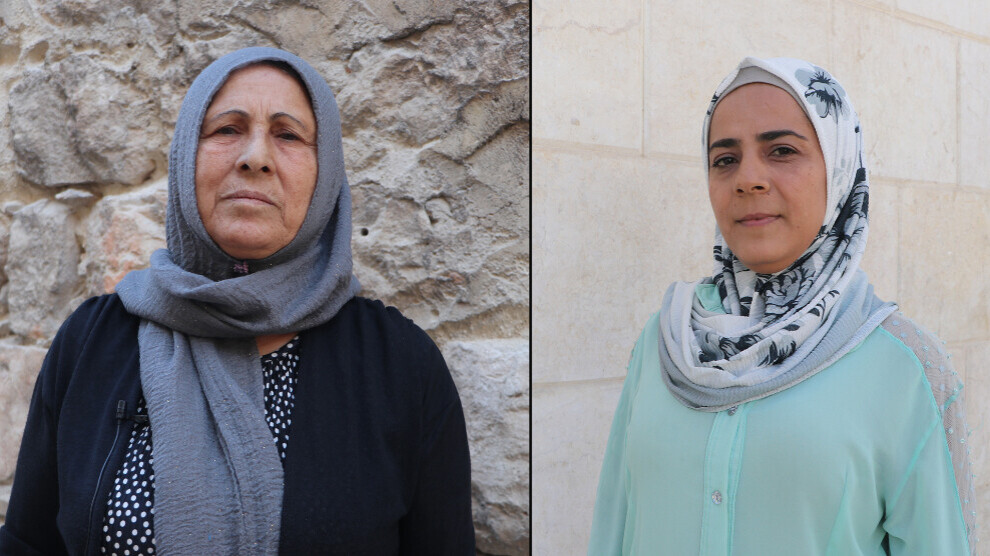Women: The Backbone of Organization and Self-Defense in the Autonomous Administration
The Syrian people of all backgrounds have suffered greatly from the war, but for the residents of Sheikh Maqsoud and Ashrafieh neighborhoods—especially the women—it has been a pioneering experience in the concept of self-defense.

Serin Mohammed
Aleppo — Today, the neighborhoods of Ashrafieh and Sheikh Maqsoud in Aleppo are enduring a severe blockade that prevents the movement of civilians and the entry of goods. On the sixth of this month, all routes leading in and out of the neighborhoods were completely shut down, prompting men and women, young and old, to take to the streets in popular protests against the measures imposed by the jihadists of Hay’at Tahrir al-Sham.
The Role of Women During the War
Jihan al-Abdullah, a woman from Sheikh Maqsoud who has struggled and resisted with unbreakable determination, says that over the past thirteen years, residents of both neighborhoods have suffered from oppression, displacement, sieges, destruction, and all forms of warfare.
She explained that women have played a distinctive role throughout these years: “Since the first days of bombardment and siege imposed by the Ba’ath regime on our neighborhoods, women have stood strong beside the fighters, offering them support and assistance.”
“We gave everything we had during the regime’s assault on our neighborhoods,” she added. “Even today, the suffering of the residents of Sheikh Maqsoud and Ashrafieh continues. After the fall of the Ba’ath regime, the jihadists of Hay’at Tahrir al-Sham arrived, and they still impose a suffocating blockade on us.”
Women’s Core Role in Organization and Protection
Jihan al-Abdullah was one of the women who prepared food for the fighters—both men and women—who risked their lives to defend their land. “We fought on the frontlines and tended to the wounded when there were no vegetables, no bread. We would rather give our last piece of bread to the fighters and wash their wounds with the last drops of water we had.”
After the fall of the regime, the same policies continued against the neighborhoods. “That’s when we entered the stage of self-defense, and women played an essential role in it—through communes and women’s assemblies within the neighborhood. Women showed remarkable strength and ability in organizing both their work and their households.”
She emphasized that “women excelled in every sense of the word—in fighting, in defense, in resistance, and in every field imaginable.”
“The ideology of leader Abdullah Öcalan played a fundamental role in empowering women,” she added, expressing her wish that “he gains his physical freedom and that women remain steadfast in their struggle—so that our cause remains one of existence, carried on our shoulders from the days of our ancestors until today.”
“Nothing Can Break a Woman Defending Her Land”
Soad Hassan, one of the women who helped organize the women’s movement in Ashrafieh and Sheikh Maqsoud since the Syrian uprising in 2012, recalls: “That same year, mercenaries from the Turkish occupation and the Ba’ath regime began their attacks and imposed blockades on our neighborhoods. The people resisted all assaults with a willpower that nothing could break. Women played a vital role in defending the neighborhoods and in organizing the youth—both young men and women.”
“They prepared food, visited hospitals to assess the wounded and offer help, and issued instructions to ensure the unity and stability of the community,” she added.
Soad was among the first to help establish the Kula Selmo Battalion, one of the first Community Protection Forces – Women units in Aleppo. The battalion included many pioneering women who organized others within the community.
At the time, self-protection meant that men and women patrolled the streets to ensure security. These community-based organizations became communal in nature, defending themselves independently. But under agreements later made between the Autonomous Administration and the Interim Government, only one remaining security force was allowed to stay—the Asayish (Internal Security Forces).
Stories of Suffering
The attacks launched by the Ba’ath regime on Sheikh Maqsoud and Ashrafieh left many dead and wounded. Soad recalls one heartbreaking incident:
“After one attack, I saw a woman crying. I asked her what had happened. She said her 12-year-old son had gone to the checkpoint to bring bread during the siege—and a shell hit the checkpoint and killed him.”
“Three days later, I saw the same woman again, this time in the hospital. Her husband had been preparing food for the mourners at the mosque when another shell fell and killed him. A month later, her brother was also killed by the Ba’ath regime.”
Complete Closure of Roads
The suffering continues to this day. “After the fall of the Ba’ath regime,” Soad said, “we thought that when Hay’at Tahrir al-Sham took over, there might be some hope for Syrians—especially after the signed agreements. But time after time, the roads leading to our neighborhoods are closed. There are seven main crossings to Sheikh Maqsoud and Ashrafieh.”
She added that on October 6, all routes were shut down again, imposing a suffocating blockade. “Residents rose up in protest, but the jihadists responded by throwing tear gas and firing live bullets at civilians.”
Even after the roads were partially reopened, members of Hay’at Tahrir al-Sham set up temporary checkpoints where they illegally searched women and verbally harassed young girls—steps clearly aimed at tightening the noose around the people of Ashrafieh and Sheikh Maqsoud.
It is worth noting that the concept of self-protection, a “defensive system,” was first established with the Rojava Revolution in 2012, as a means for civilians to defend themselves against any external attack or threat.
